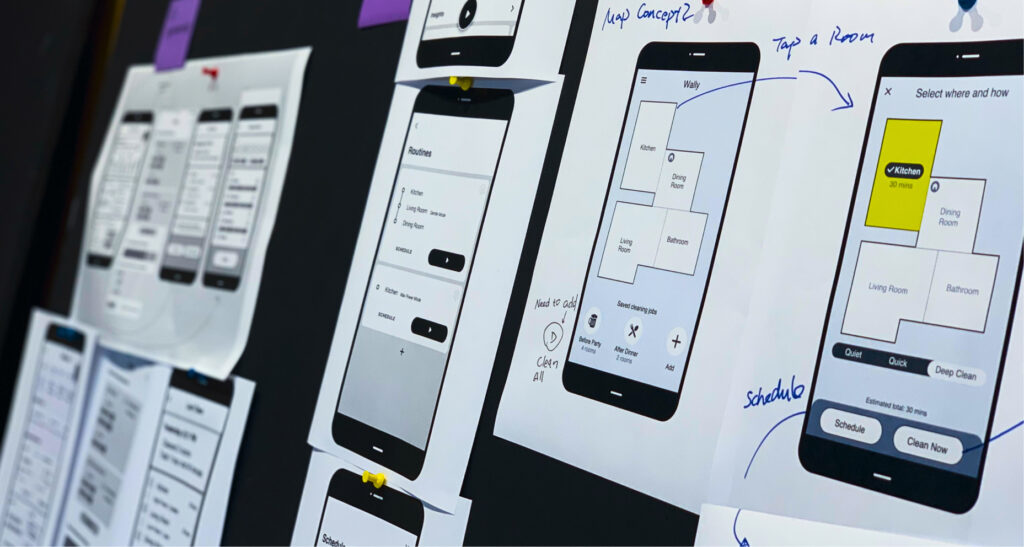
As the software design manager at iRobot, I helped recruit and build a multifaceted team of designers, leading them through design research, usability studies, prototype testing, product design, a design system roll out and a complete rebrand and redesign of the android and iOS apps.
Background
Rising competition and rapid tech shifts pushed iRobot to reassert industry vision and sharpen market differentiation. Early market-proposition research showed consumers now expect seamless, hands-free autonomy from their products and cared less about specs as selling points(suction power, battery life), and prioritized efficacy and lifestyle fit—schedules, home patterns, and personalized routines. In parallel, our engineers advanced core capabilities such as object recognition, real-time status, LiDAR mapping, and smart-home integrations.
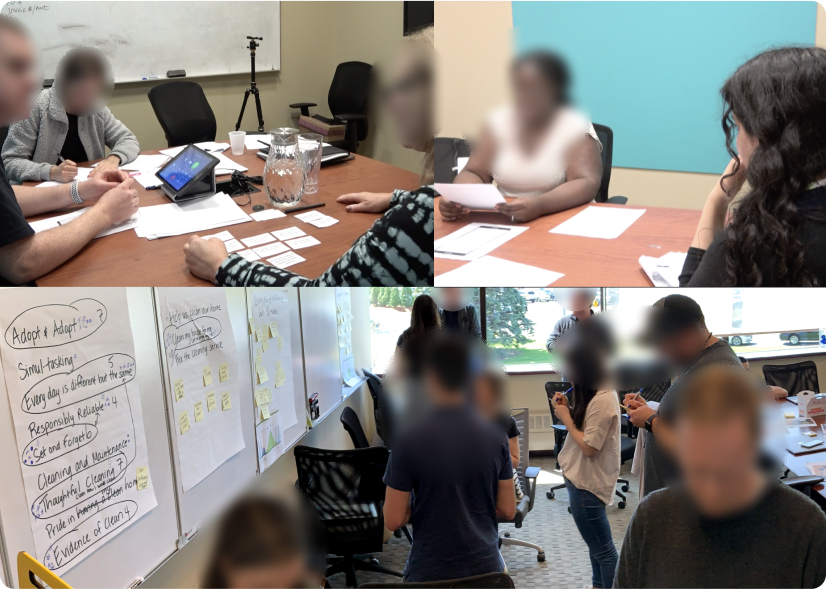
Shots captured during team brainstorms, and discovery sessions with new and existing customers.
While we maintained the Android and iOS apps (then mostly a start button with basic scheduling), we launched a new discovery program to deliver meaningful value for current and prospective customers. Cross-functional sessions with Marketing, Engineering, and Product informed a nine-part UX research initiative to map customer mental models and user journeys.
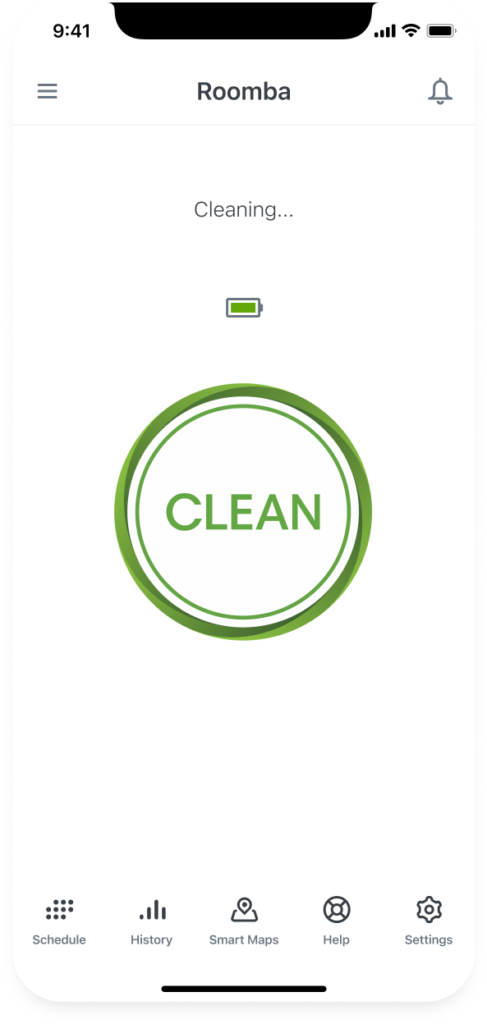
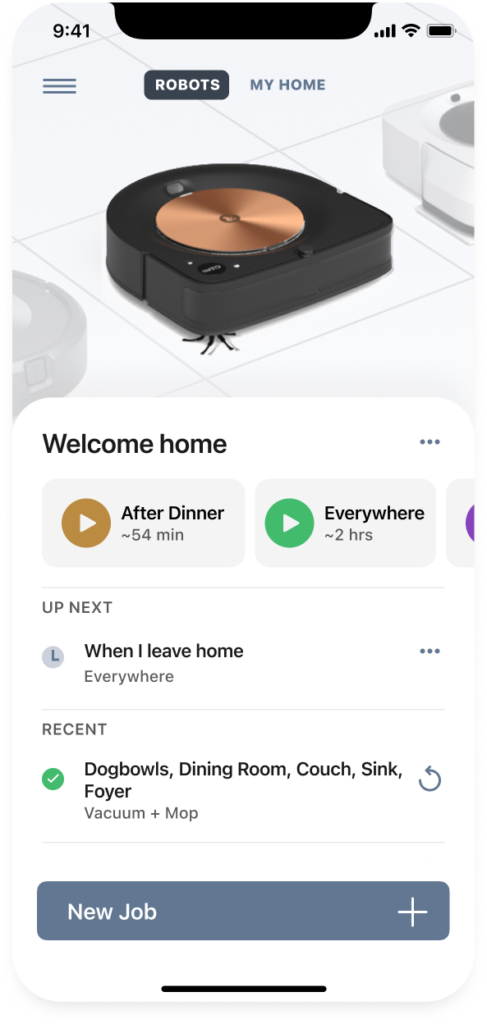
UX Design Process
As discipline lead, I partnered with department heads and guided the team through design sprints, user research, prototype testing, and UI design. Each week I led my team through rapid design cycles based on the findings form our research with time built in for customer feedback. Sprints included the following phases: Understand, Diverge, Decide, Prototype and Validate.
We did this for 9 weeks of the course of the summer and emerged with a user journey, app architecture, key supporting user flows and a product roadmap. From there we moved into high fidelity app design covering, onboarding, user guidance, map generation, robot scheduling/triggering, shortcut creation, mission initiation, keep-out-zones/target area placement, and smart home/voice control integrations.
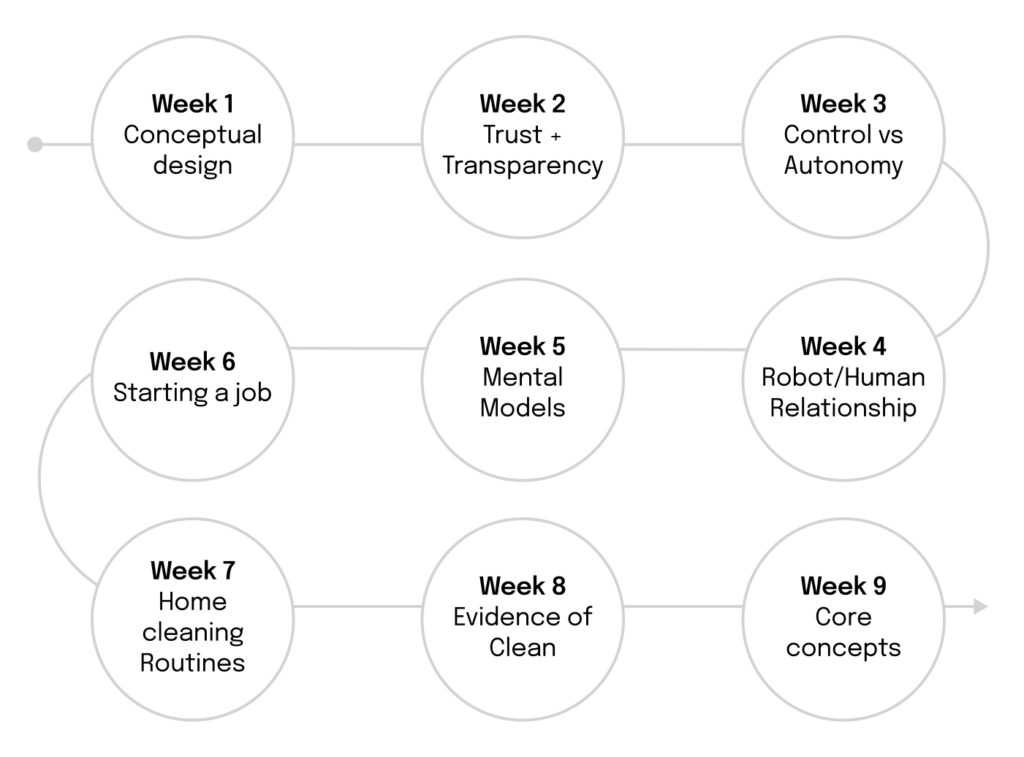
Early on in the design process, I collaborated with department heads to sketch out a number of short, medium and longer term user scenarios to help the teams communicate and align around the product vision.
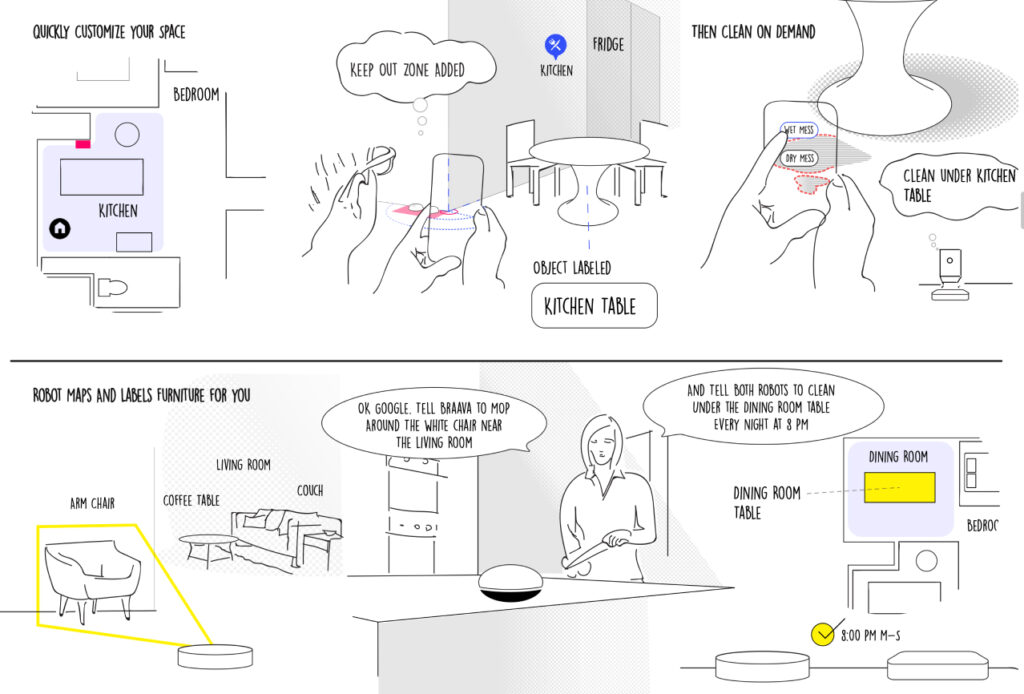
Key insights and the design approach
User research revealed gaps and opportunities in the customer experience. Some of what we learned was novel and some directly reinforced what we heard from proposition research. What emerged was a user experience framework, grounded in user needs. Key themes included, personalization, the relationship between trust and autonomy, feedback or proof of a job well done and more control of the robot in the home. This research served as a catalyst for the next phase of app to robot design and additionally helped shape the company’s marketing strategy.
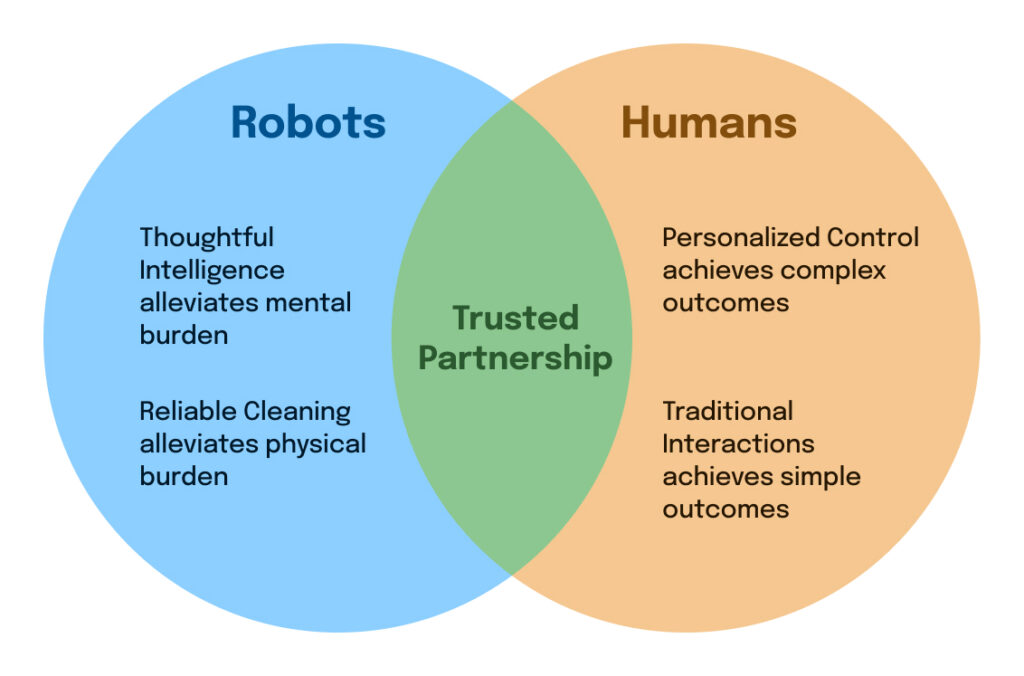
Each week talking to users, our teams, learning together, began to prototype and design screens to be the bridge between human and robot. Interaction models emerging from design research included: scheduling, robot transparency, personalized routines, enhanced control.
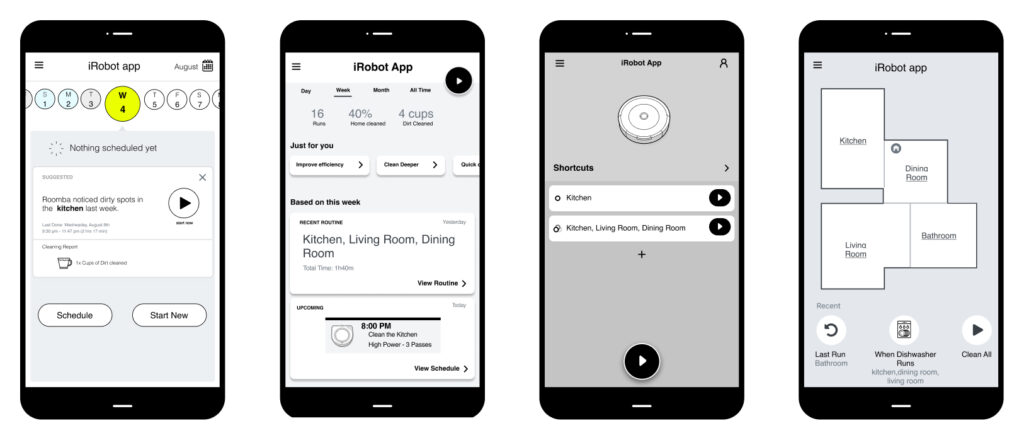
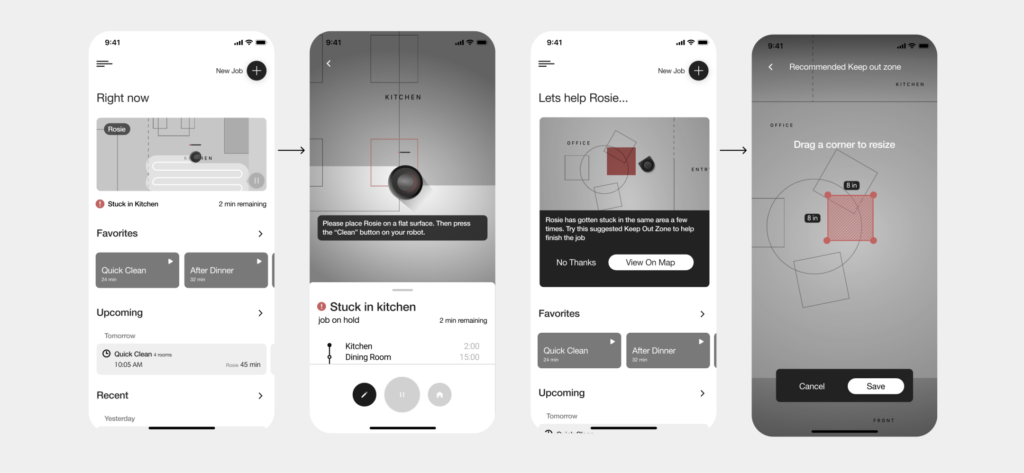
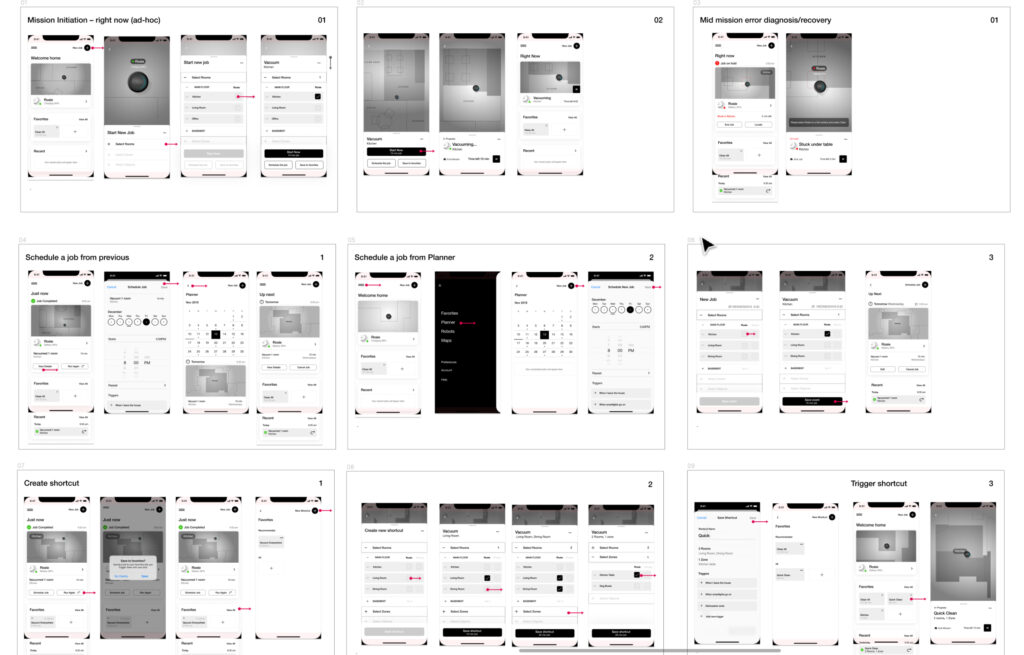
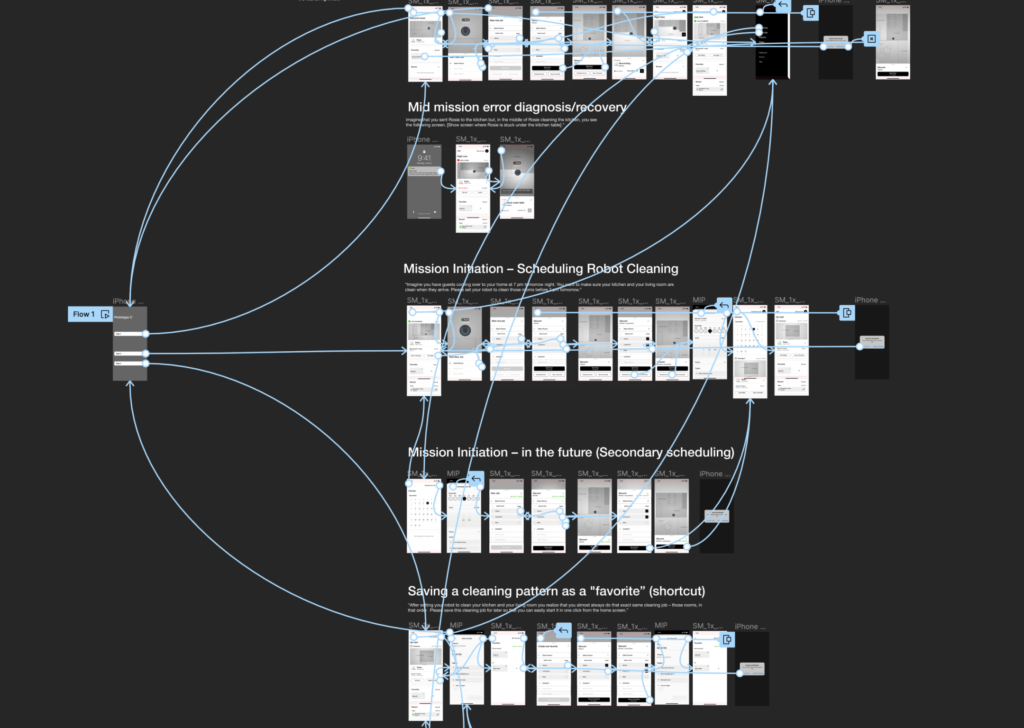
Visual design and scalable interface systems
iRobot’s user centric culture provided rich opportunities for us to ground our work in what resonated with consumers. We conducted additional research in collaboration with our industrial design team to establish an aesthetic that would resonate with existing customers and beyond into the smart home market. Customers, responded positively to robot design incorporating clean lines and sleek finishings. They preferred aspirational, minimal yet clear physical interaction on the robot itself and more robust control through the app. With these insights, we worked to define the visual language of brand and UI.
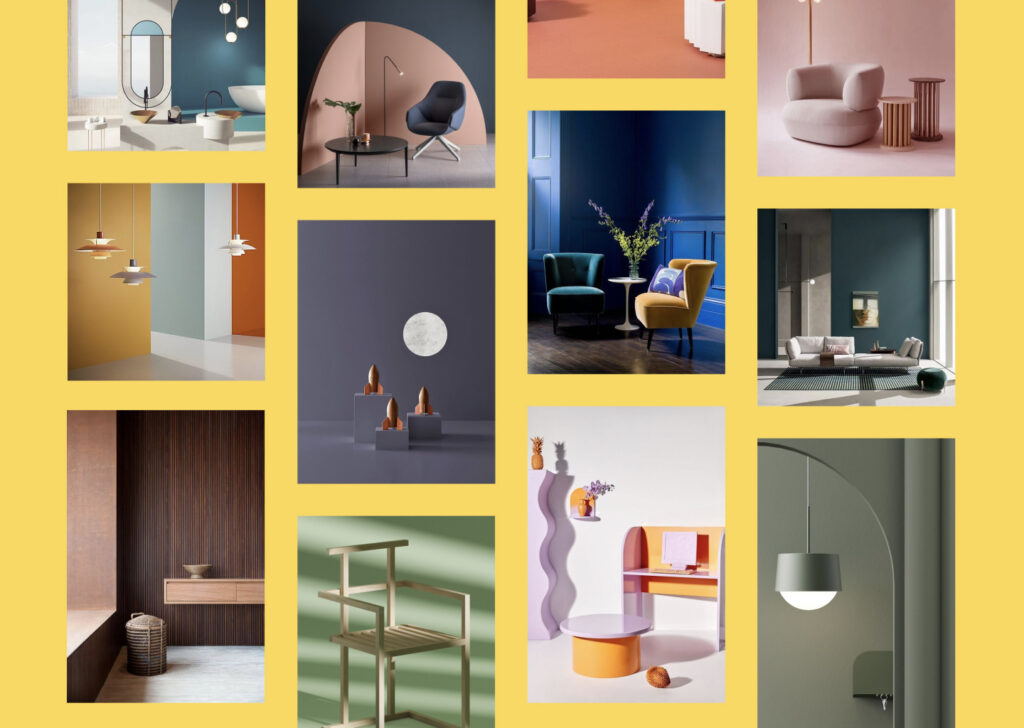
Finally we learned that users wanted the app to represent their product accurately which led us to evolve our digital design aesthetic from a cute stylized, nondescript cartoon style into an accurate 1-1 representation of the specific robot they saw in their home. Our ui kit, including in app robot renderings, map visuals and interface elements were designed in support
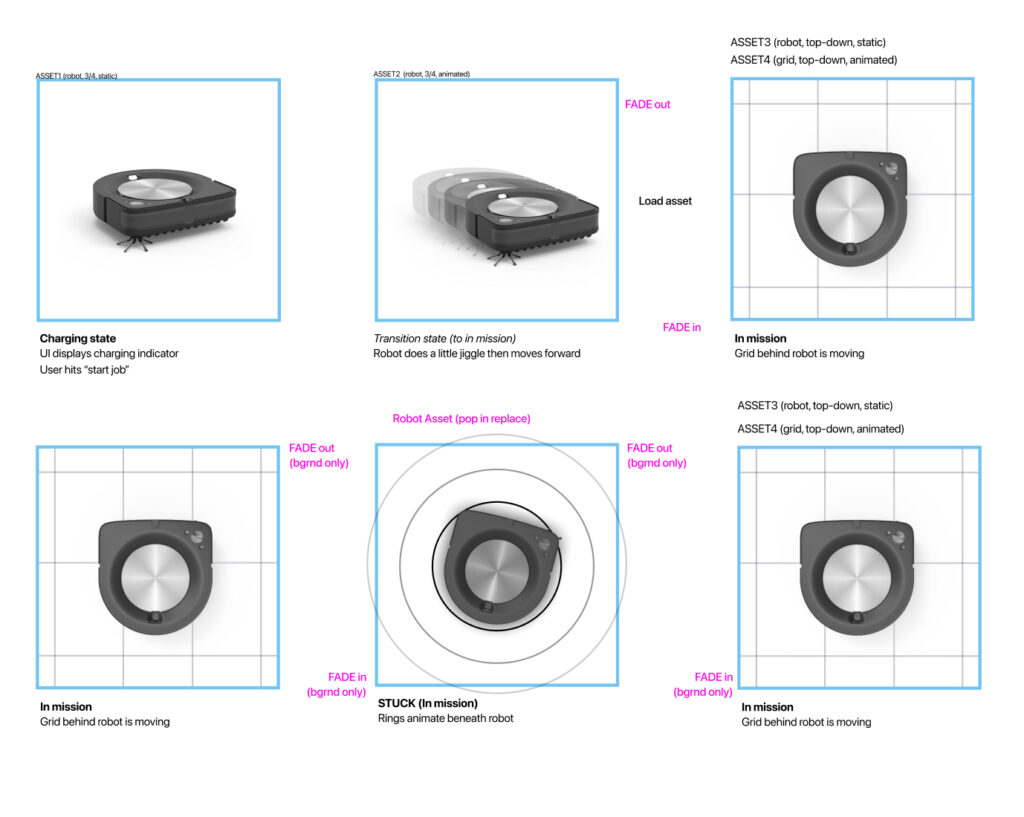
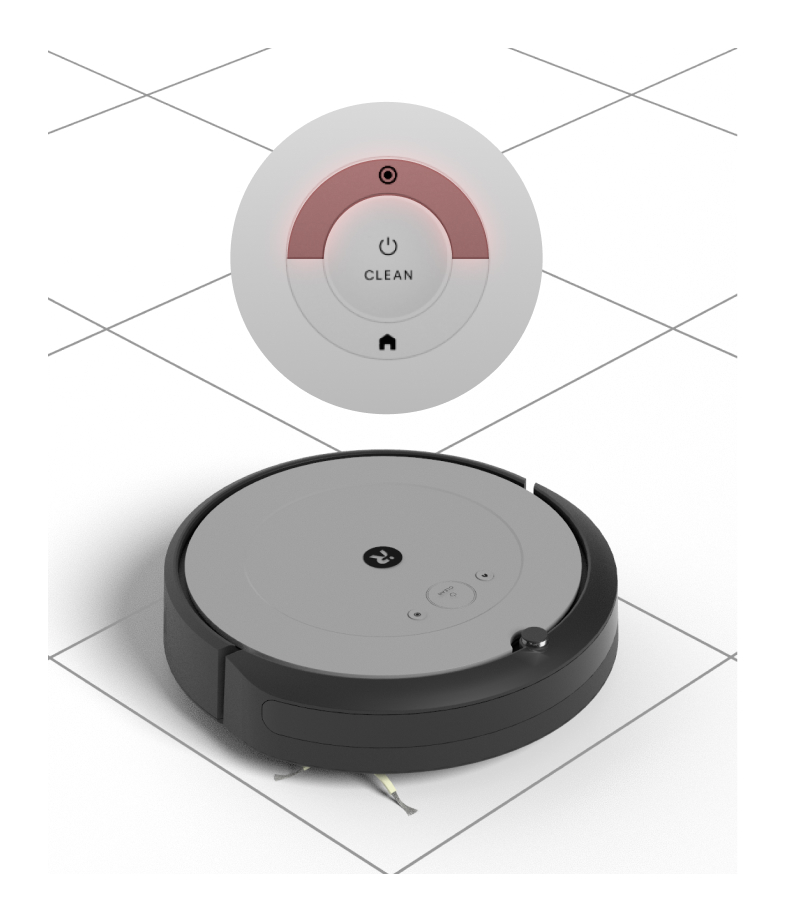
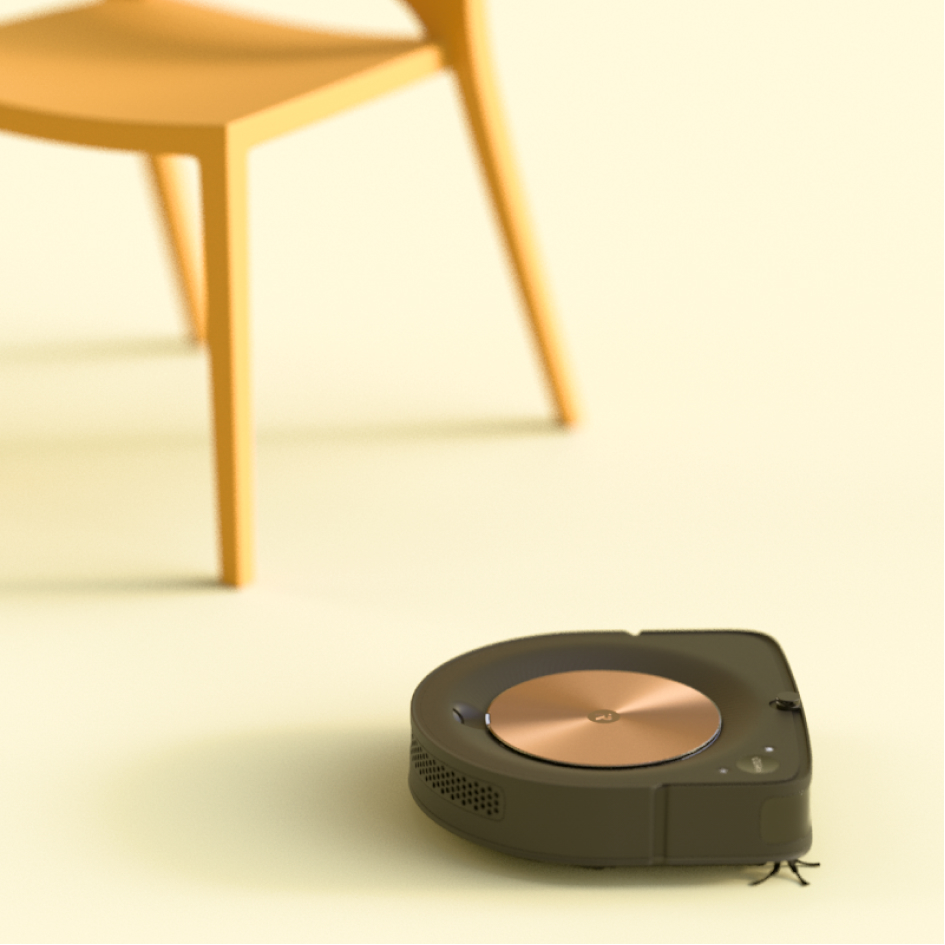
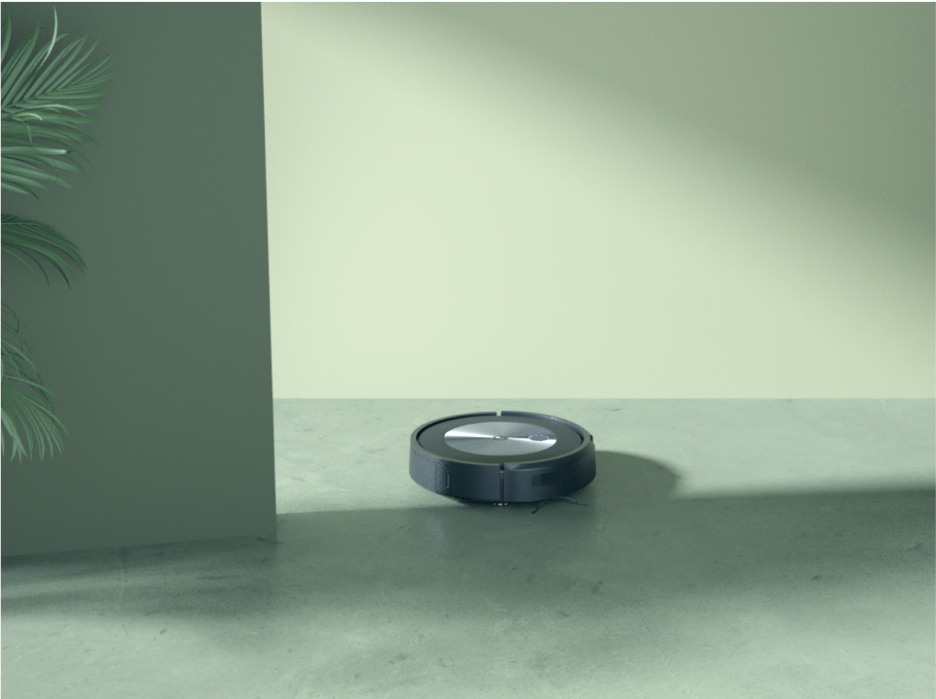
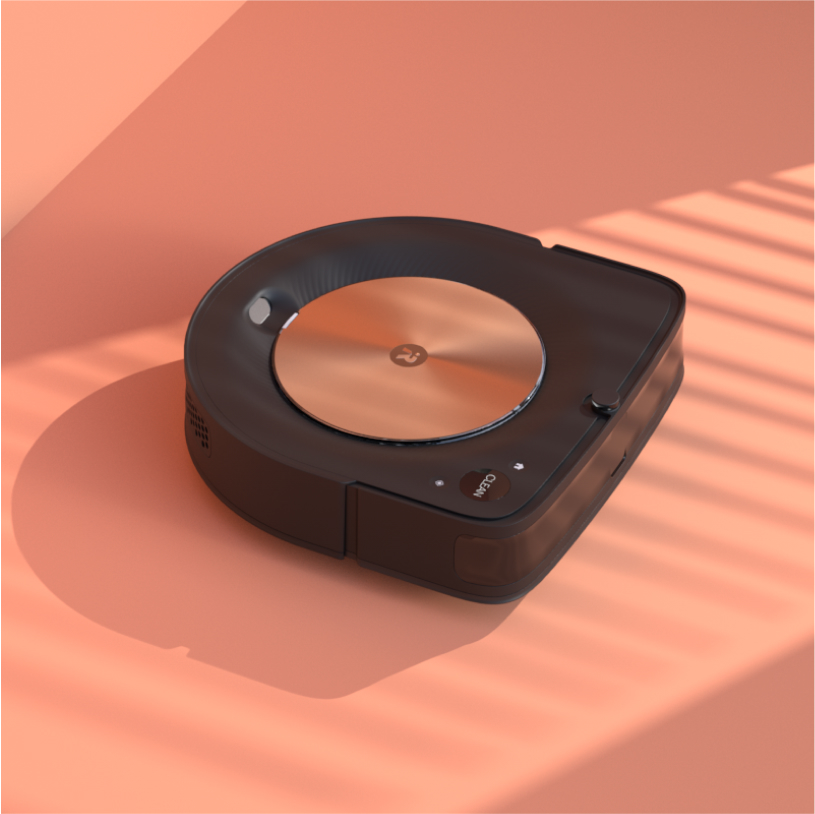
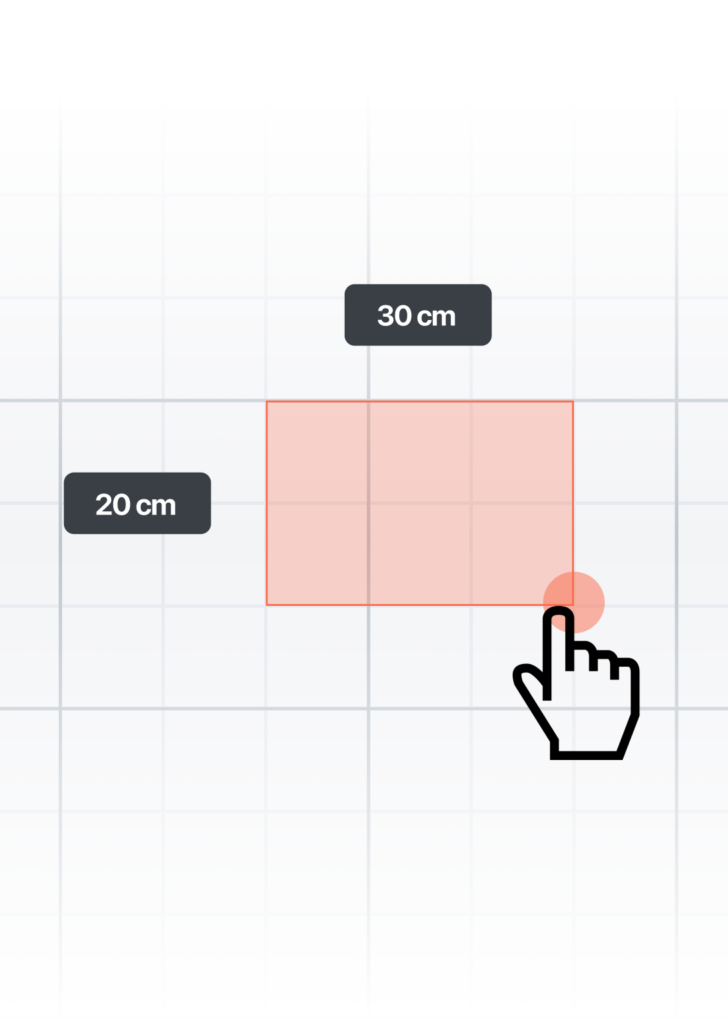
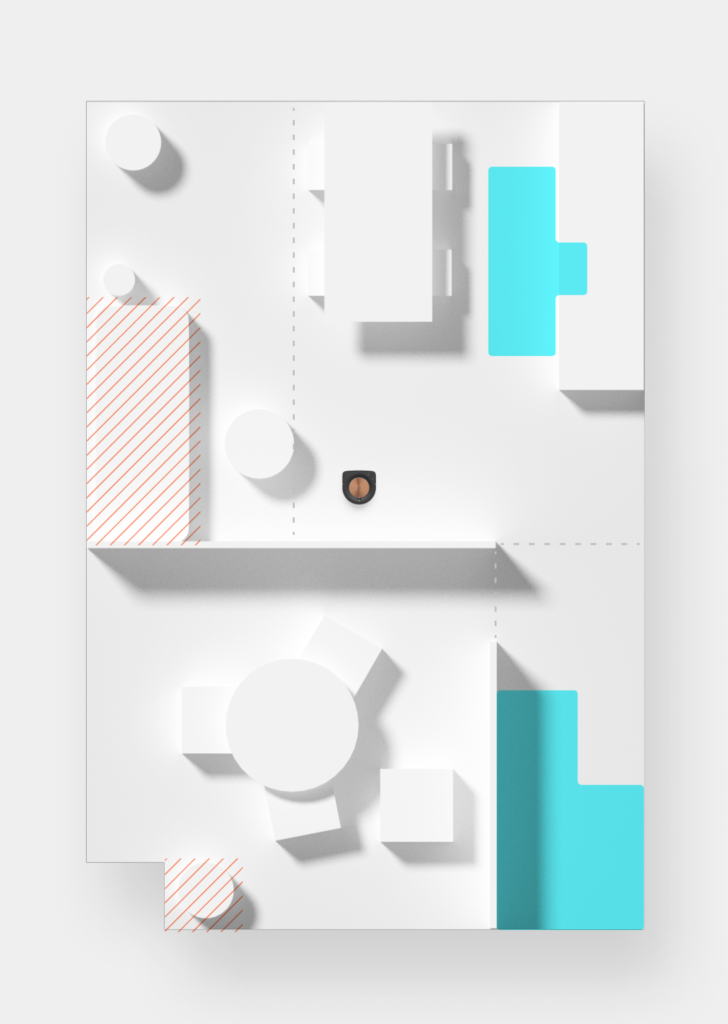
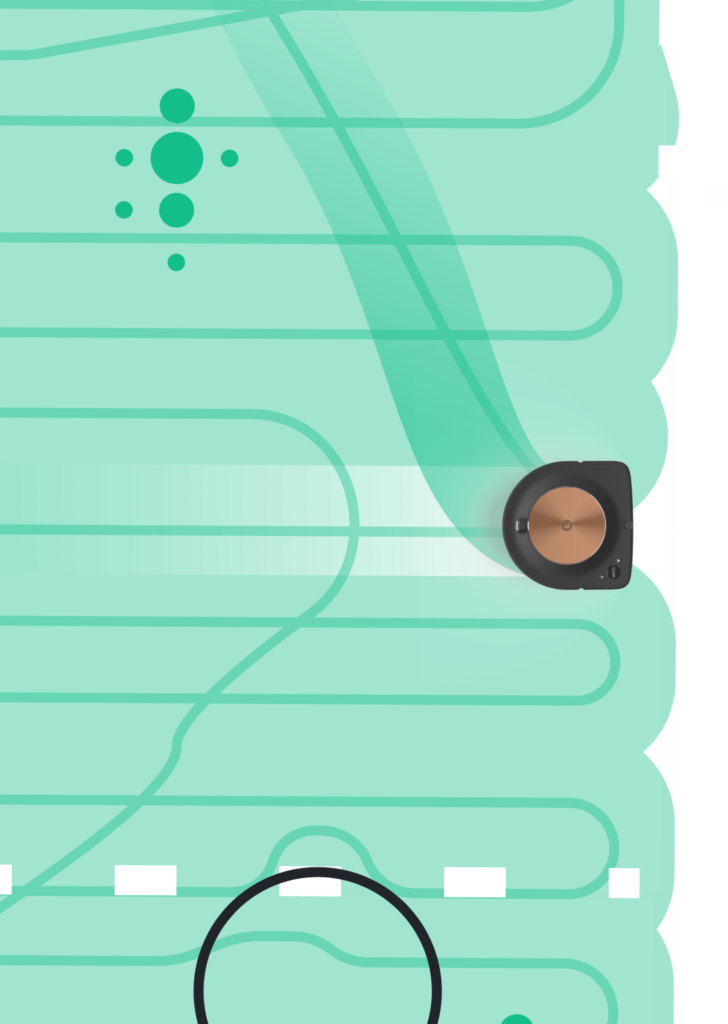
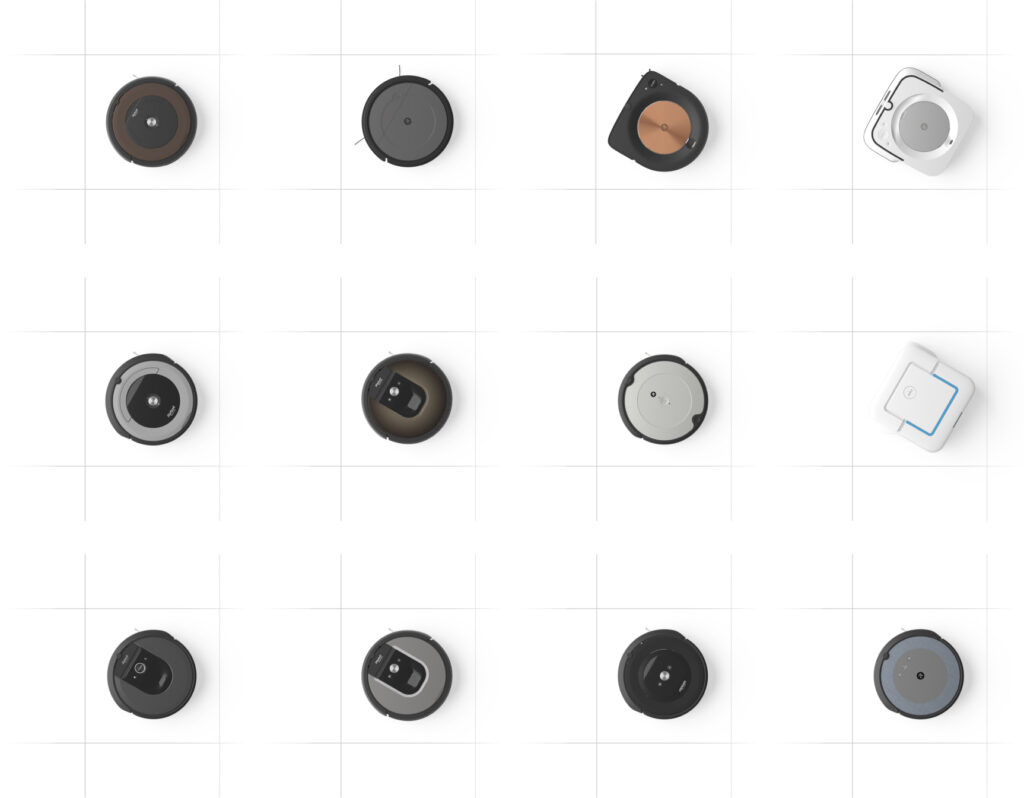
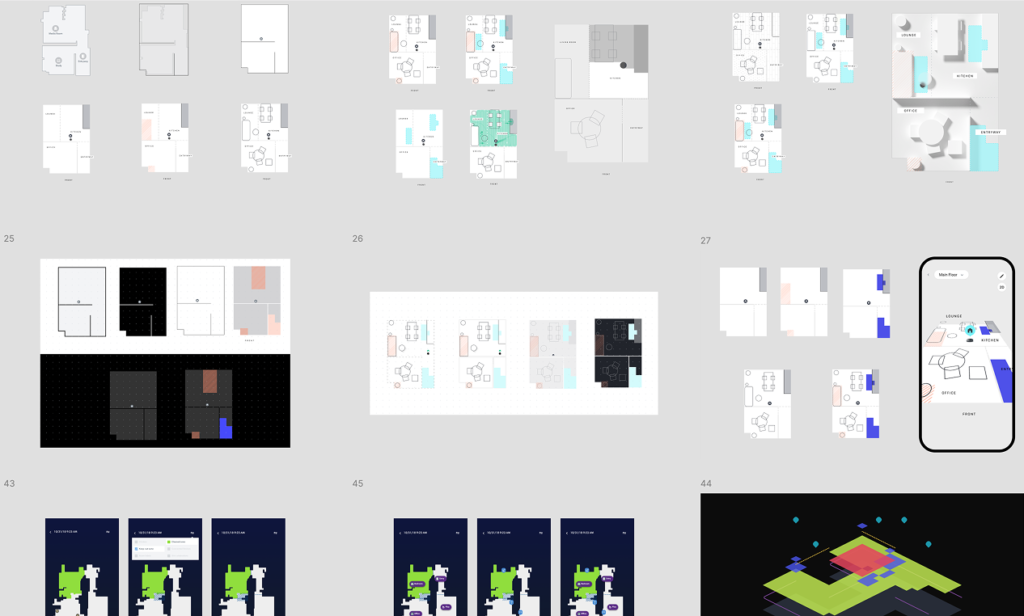
As our interaction models evolved we worked in Figma to build out navigation patterns, interface components and visual styles. After launching the design kit we released design guides and design kit documentation.
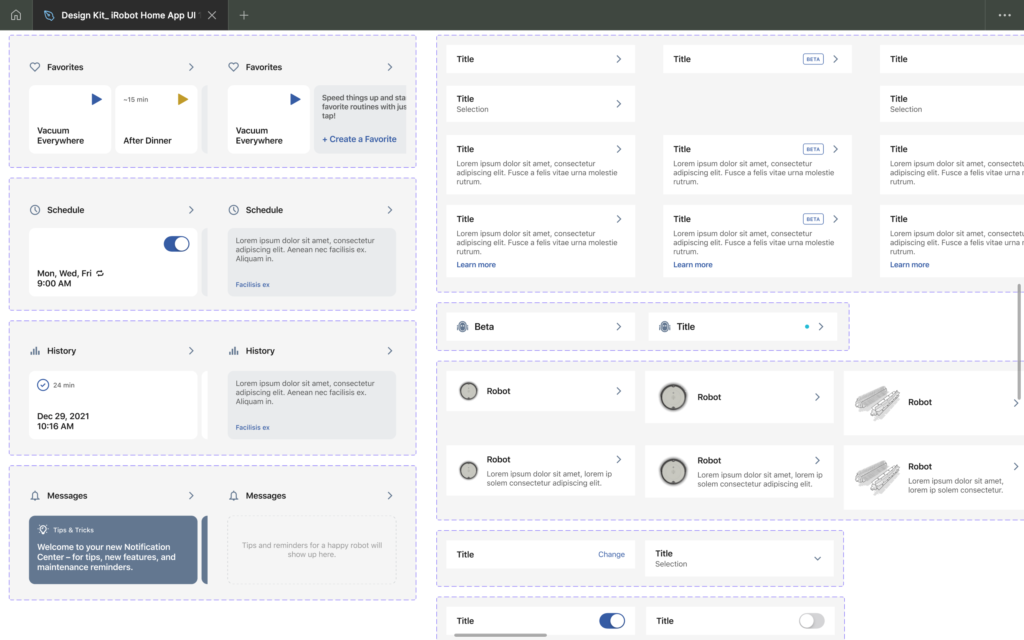
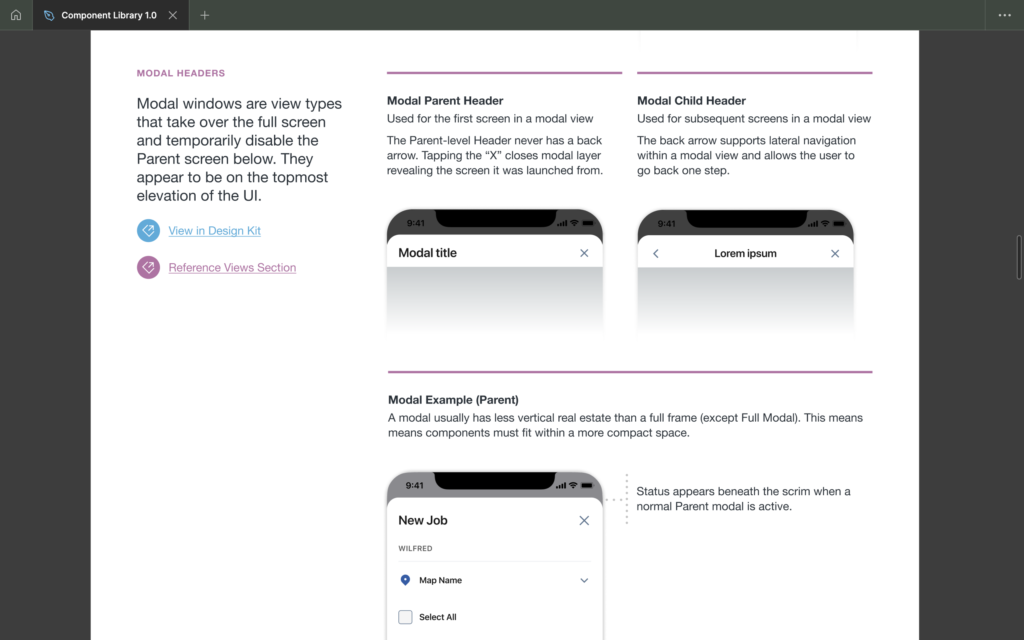
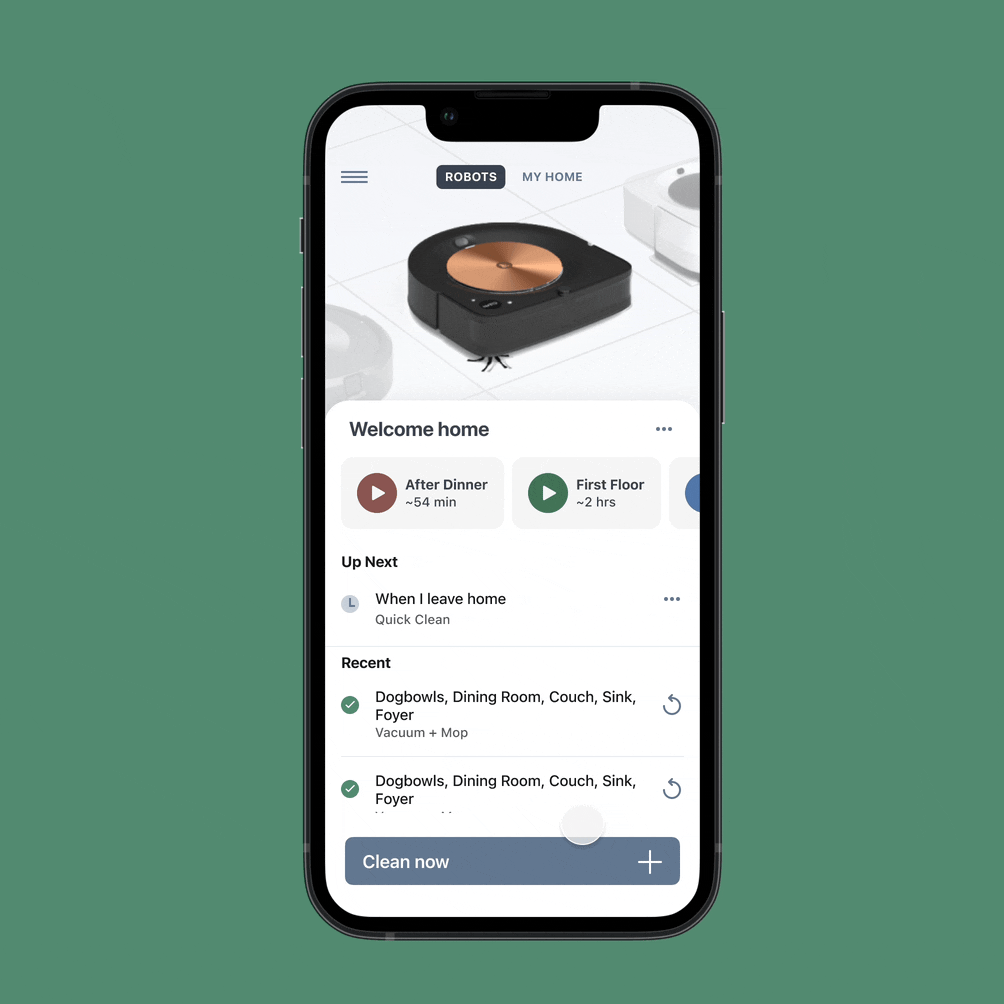
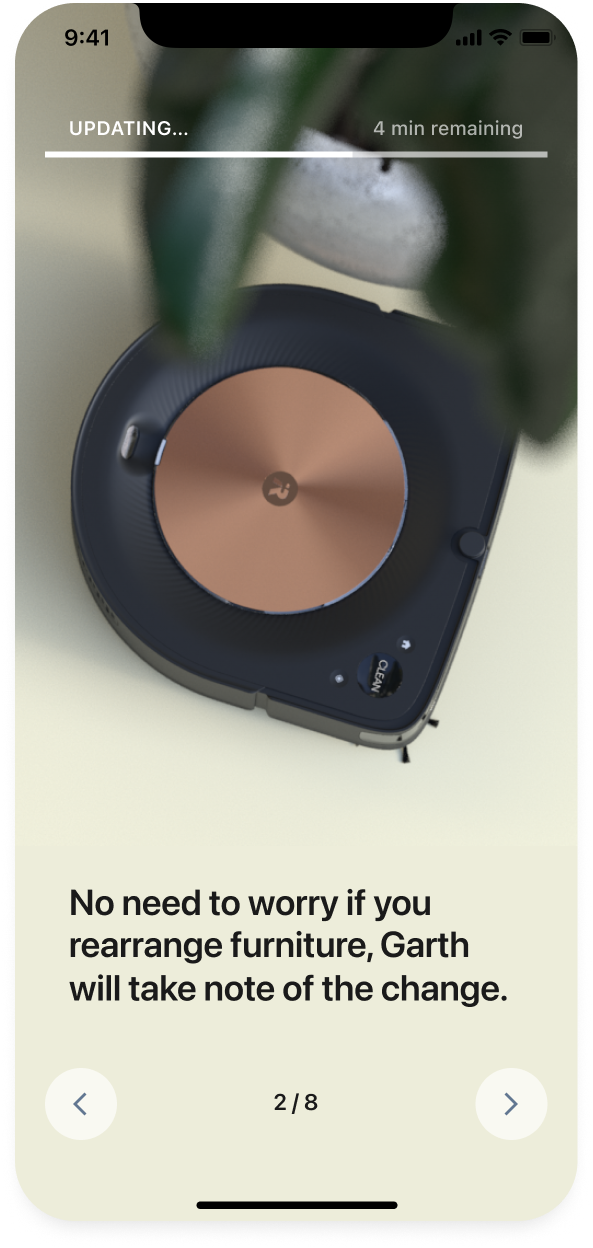
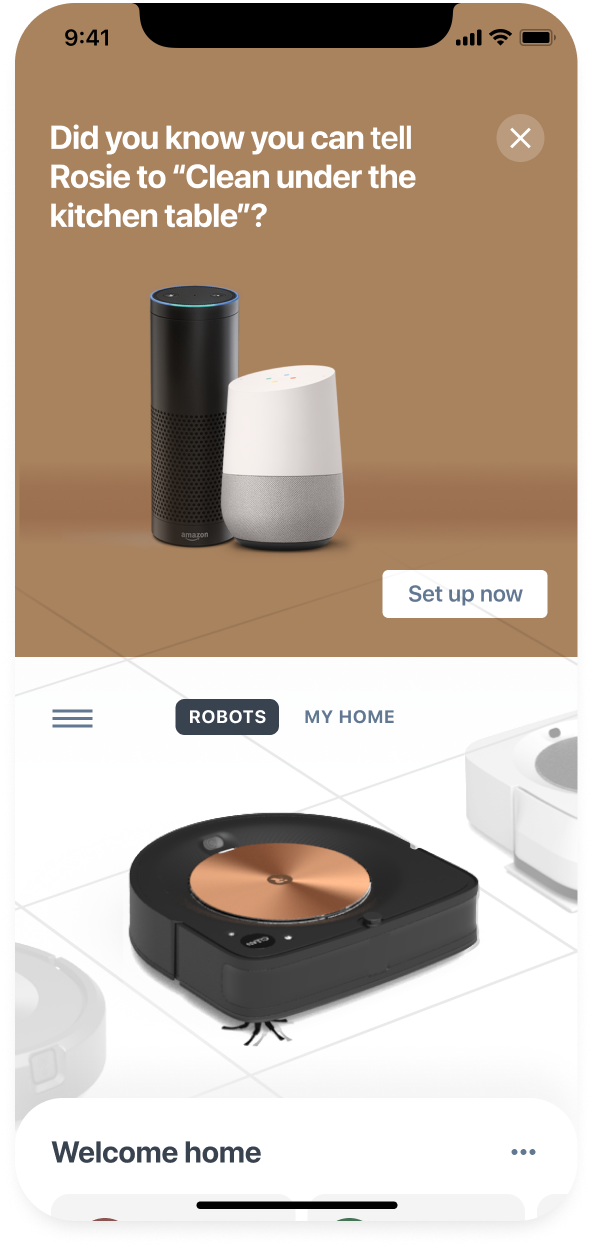
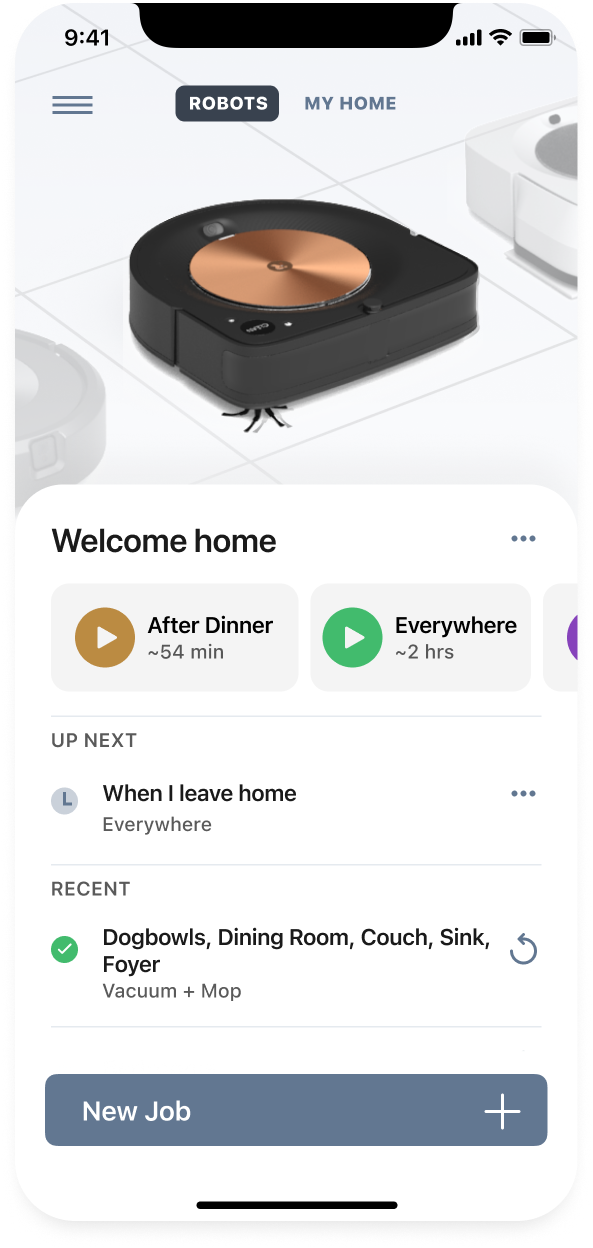
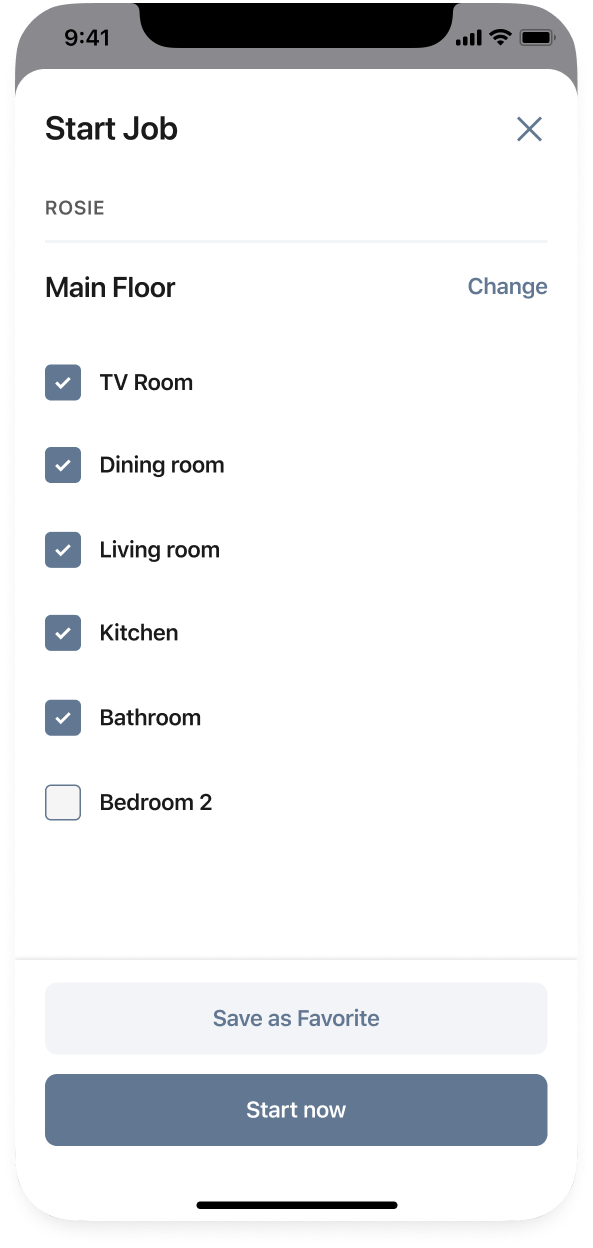
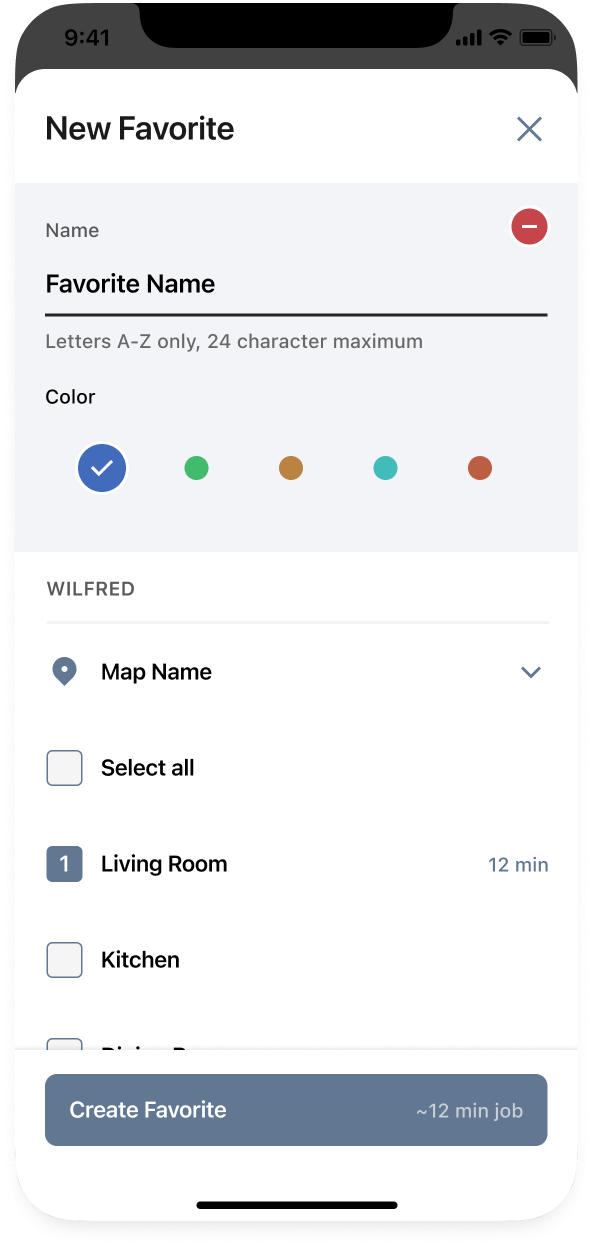
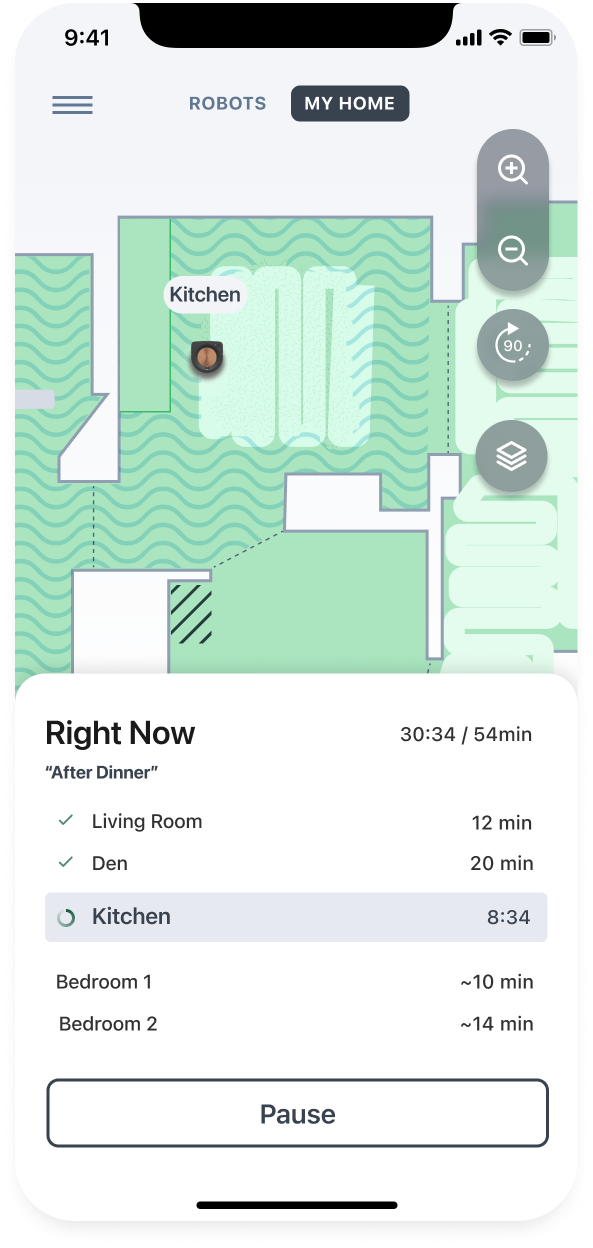
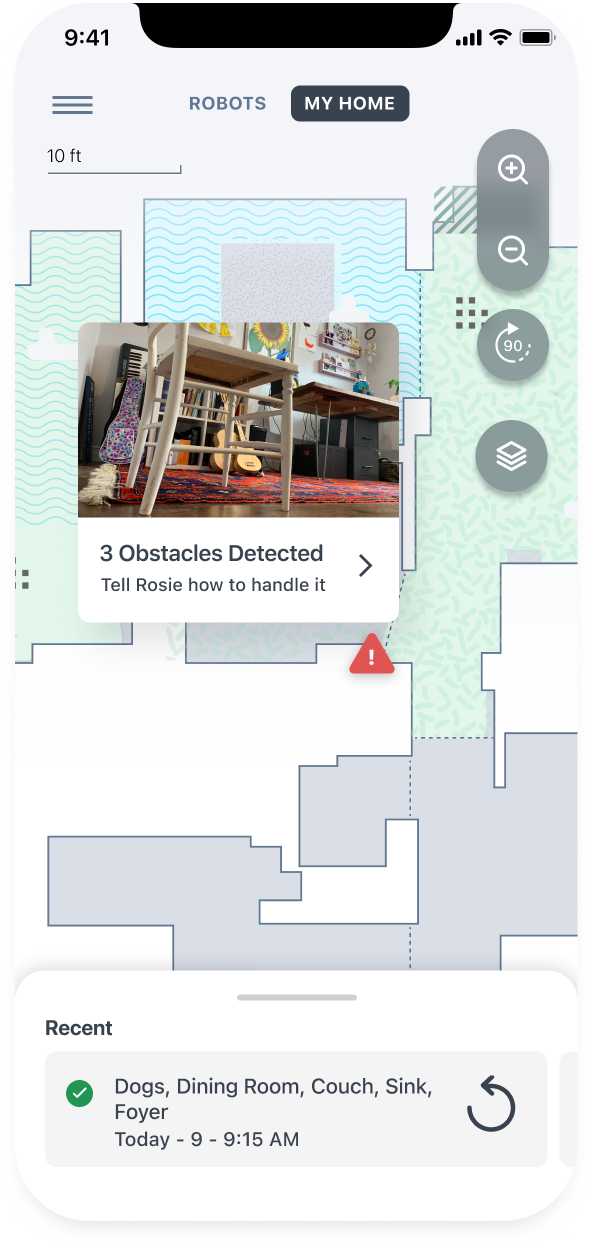
Beyond a redesigned app and system, this work defined a scalable framework for iRobot’s digital experience and a repeatable way to build human–autonomy trust: clear feedback, personalization, and transparent control. The same pattern applies to AI/ML products in finance, health, education, and enterprise—make autonomy legible, show receipts, personalize to context, and provide simple overrides.
Impact Metrics
- Room-label accuracy reached 90%
- Full-map creation was 7× faster, accelerating trust after a single run
- Connected customers grew to 17.6M by the end of 2022 (+26% YoY)
- Revenue from existing customers rose +8.9% (FY2022)
- Direct-to-consumer revenue grew +3.4% (FY2022)
Bottom line: The iRobot program improved trust, personalization, and control for customers, and it produced measurable gains in accuracy, speed, adoption, and revenue. Just as important, it proved a repeatable human plus autonomy framework that can apply to future AI and machine learning applications.